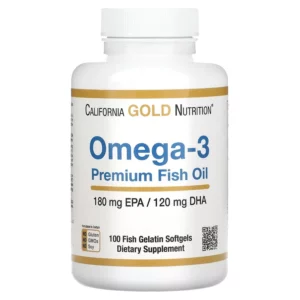Pain is a widespread health concern, and the ways to address it go beyond just medication or surgery. In this article, we’ll dive into research and information from the National Center for Complementary and Integrative Health (NCCIH), a part of the NIH, to provide a detailed look at complementary health therapies for managing pain. We’ll explore the real-world effectiveness and safety of treatments such as acupuncture, yoga, meditation, and more.
Pain: Types, Definitions and Causes
Pain can be categorized based on its duration, falling into two main categories: “acute pain” for short-term pain and “chronic pain” for persistent pain. [1]
Chronic pain can stem from various sources, including diseases, injuries, surgeries, inflammation, or issues with the nervous system. Sometimes, the exact cause remains unclear.
Chronic pain is more prevalent among women than men and becomes increasingly common with age. Older adults are more susceptible to health problems that can lead to pain, with common conditions including back pain, osteoarthritis, as well as others like rheumatoid arthritis, migraines, carpal tunnel syndrome, and fibromyalgia.
People dealing with pain may encounter difficulties with daily activities, sleep disturbances, anxiety, depression, and other related issues that significantly impact their overall quality of life.
Complementary Health Approaches
Complementary Health Approaches encompass a diverse range of medical and healthcare systems, practices, and products, such as herbal remedies, dietary supplements, meditation, chiropractic adjustments, and more.[2] Trusted Website U.S. National Center for Complementary and Integrative Health Open the link →
These approaches can be categorized into four main types based on their application:
- Psychological therapies: such as mindfulness and hypnotherapy.
- Physical therapies: such as massage therapy and chiropractic adjustments.
- Nutritional therapies: such as dietary supplements.
- Integrative therapies: such as yoga, which combine physical therapies with psychological approaches such as meditation.
Complementary therapies can be used alongside conventional medical care. For instance, cancer treatment centers that offer comprehensive medical care may provide complementary therapies like acupuncture and meditation to complement traditional cancer treatments like chemotherapy. These complementary approaches aim to help manage symptoms and side effects.
The safety of complementary therapies depends on the specific therapy, and each product or practice should be assessed individually.[3] Trusted Website U.S. National Center for Complementary and Integrative Health Open the link →
However, it’s crucial to avoid using complementary therapies as a reason to delay seeking medical attention. In cases of illnesses that require timely treatment, delaying medical care to experiment with complementary therapies can lead to a worsening of the condition. If you are considering postponing traditional medical interventions, be sure to consult with a healthcare professional first.
Acupuncture
Acupuncture can be utilized to alleviate various pain symptoms. During treatment, practitioners insert tiny acupuncture needles into the skin to address ailments, and these needles can be stimulated through manual manipulation or low electrical currents (electroacupuncture).
While the precise mechanisms behind its effectiveness remain somewhat unclear, research suggests that it may be beneficial in certain cases.[4] Trusted Website U.S. National Center for Complementary and Integrative Health Open the link →
In the United States, acupuncture is most commonly employed for pain relief, particularly in cases of back, neck, or joint pain.

Playa del Carmen/Pexels
Is Acupuncture Safe?
Serious complications from acupuncture are uncommon, but improper handling can indeed lead to severe problems such as infections or organ injuries. It’s crucial to ensure that you choose a practitioner who has received professional training and is properly qualified to minimize these risks.
Relevant Researches
- Back/Neck Pain: Proven to be effective, with pain relief comparable to non-steroidal anti-inflammatory drugs (such as ibuprofen, etc.). The American College of Physicians recommends acupuncture as a treatment option for patients with low back pain.
- Osteoarthritis: May be effective. The American College of Rheumatology and the Arthritis Foundation conditionally recommend acupuncture for the treatment of knee, hip, or hand pain in osteoarthritis patients.
- Headaches: May be effective for migraine and tension-type headaches, but evidence quality is relatively low.
- Myofascial Pain Syndrome: It can help relieve pain, but traditional acupuncture points may not be effective.
- Sciatica: It can provide pain relief, but the evidence quality is not high.
- Postoperative Pain: Acupuncture has been shown to reduce postoperative pain and decrease the use of opioid painkillers.
- Breast Cancer-Related Joint Pain: Research in early-stage breast cancer patients has found that acupuncture can alleviate joint pain caused by aromatase inhibitors, drugs used in breast cancer treatment.
- Chronic Prostatitis/Chronic Pelvic Pain Syndrome: It may be helpful, but the evidence is insufficient.
- Irritable Bowel Syndrome: Acupuncture, when used in conjunction with other treatments, may help alleviate symptoms.
- Fibromyalgia: It can help relieve pain, but the evidence quality is not high.
*The research mentioned above typically involves comparing acupuncture therapy to a control group. The control group often uses sham acupuncture, which simulates the experience of acupuncture for patients without actually inserting needles into the skin. The purpose of sham acupuncture experiments is to eliminate or reduce the interference of psychological effects on the results.
Massage
Massage therapy involves manipulating soft tissues in the body with the goal of managing health conditions or promoting overall well-being.

Is Massage Safe?
The risks associated with massage therapy are generally low, but intense massage techniques like deep tissue massage can potentially lead to serious injuries. Elderly individuals may be more susceptible to injuries during massages.
Precautions should be taken when receiving a massage, depending on one’s health condition. For example, people taking anticoagulant medications like warfarin are not suitable candidates for vigorous massages. Areas around wounds should not be massaged, and cancer patients require special precautions to ensure safety.
Choosing an experienced professional massage therapist is of paramount importance. You can find licensing and certification information for massage therapists on the official website of the American Massage Therapy Association.
Relevant Researches
Limited research suggests that massage therapy may be helpful in relieving various types of pain, although its effects are typically short-lived. [5] Trusted Website U.S. National Center for Complementary and Integrative Health Open the link →
- Lower Back Pain: Weak evidence indicates potential effectiveness, but it’s unclear whether specific types of massage are more effective.
- Shoulder and Neck Pain: It has been shown to help alleviate pain, but the effects are of shorter duration.
- Cancer Pain: It can be used as supportive care for cancer patients, but the evidence for pain and anxiety relief is insufficient.
- Arthritis: There is evidence supporting its effectiveness in relieving pain, with stronger evidence for osteoarthritis compared to rheumatoid arthritis.
- Headaches: Research results for relieving tension-type headaches or migraines are inconsistent.
- Fibromyalgia: Massage lasting for over a month may be helpful in alleviating fibromyalgia.
Meditation and Mindfulness
Meditation covers a range of techniques, like focusing on specific activities or sensations such as breathing, sounds, images, or repeating mantras silently. There’s also something called “mindfulness meditation,” which emphasizes staying in the present moment without judgment. “Mindfulness-based Stress Reduction” is a program that teaches mindfulness meditation and offers strategies to deal with stress.

Is Meditation Safe?
Meditation is generally considered to have a low risk profile, but there is limited research exploring its potential drawbacks.
Some limited studies suggest that meditation and mindfulness may be helpful in pain management, especially for dealing with chronic pain.
However, the effectiveness can vary from person to person. It’s advisable to use these techniques under the guidance and recommendation of a medical professional.
Relevant Researches
The results of studies on meditation for acute and chronic pain have been inconsistent.[6] Trusted Website U.S. National Center for Complementary and Integrative Health Open the link →
- Acute Pain: It has been shown to increase pain tolerance but doesn’t seem to have a significant effect on pain relief.
- Chronic Pain: Meditation and cognitive-behavioral therapy can reduce pain intensity. Cognitive-behavioral therapy is commonly used as a psychological intervention for chronic pain.
- Lower Back Pain: Proven to provide short-term benefits for lower back pain.
- Fibromyalgia: No significant improvement has been demonstrated.
- Headaches: Meditation doesn’t appear to be helpful in terms of headache frequency, duration, or intensity.
Music
Research indicates that listening to music or engaging in music creation can help promote health and manage disease symptoms, including pain management.
Is Music Therapy Safe?
Music therapy is generally safe but not without risks: high volumes can damage hearing; music can be associated with memory or strong emotions, causing discomfort for some individuals when exposed to specific tracks or music genres; extended periods of playing musical instruments may lead to pain and injury; exercise-based music therapy also requires appropriate safety measures to prevent injury.[7] Trusted Website U.S. National Center for Complementary and Integrative Health Open the link →
Relevant Researches
Most studies have focused on the impact of music on acute pain, especially the short-term effects of acute pain related to medical procedures (such as surgery). A small number of studies have explored chronic pain associated with diseases like cancer, fibromyalgia, multiple sclerosis, or osteoarthritis.
Research suggests that music can alleviate chronic pain and related symptoms of depression. When patients are allowed to choose their own music, the effects tend to be better than when music is selected by researchers.
There is evidence to indicate that music therapy may reduce the use of pain medications.
Relaxation Techniques
Relaxation techniques include progressive relaxation, guided imagery, biofeedback-assisted relaxation, and deep breathing exercises. The purpose of these techniques is to trigger the body’s natural relaxation response, slow down breathing, lower blood pressure, and promote a sense of calm and ease.
Are Relaxation Techniques Safe?
Relaxation techniques are generally safe for healthy individuals, but there have been reports of negative experiences, such as increased anxiety, intrusive thoughts, or worries about losing control. In very rare cases, some relaxation techniques may exacerbate symptoms for individuals with mental health issues, substance abuse history, or a history of trauma.
Relevant Researches
Research indicates that incorporating relaxation techniques into traditional treatment plans may be helpful for certain pain symptoms.[8] Trusted Website U.S. National Center for Complementary and Integrative Health Open the link →
- Postoperative Pain: Relaxation techniques may be helpful.
- Headaches: They can improve migraines and tension-type headaches, including reducing the frequency of headache episodes. Combining relaxation techniques with cognitive-behavioral therapy yields better results.
- Back Pain: The American College of Physicians guidelines recommend progressive muscle relaxation and biofeedback as treatments for chronic back pain. There is evidence to suggest that progressive muscle relaxation can also improve back function.
- Arthritis: Guided imagery may be helpful for arthritis and other rheumatic diseases.
- Fibromyalgia: Limited evidence exists. Biofeedback has no clear benefits; results on guided imagery are mixed, and research on progressive muscle relaxation is insufficient.
Spinal Manipulation
Spinal manipulation involves the controlled application of force to spinal joints by trained healthcare professionals, either manually or with specialized instruments, with the goal of managing various conditions.[9] Trusted Website U.S. National Center for Complementary and Integrative Health Open the link →
Is Spinal Manipulation Safe?
After spinal manipulation, temporary side effects like pain, discomfort, stiffness, or headaches may occur, but they typically resolve on their own within 24 hours.
Though rare, spinal manipulation therapy can potentially lead to severe issues such as spinal or nerve problems or cervical artery dissection (neck artery stroke), but there is no statistical data to determine the frequency of such occurrences.
If you are considering spinal manipulation therapy, it’s essential to discuss it with your doctor and inform them about any medications you are currently taking. You can find licensing and certification information for spinal manipulation practitioners on the official website of the American Massage Therapy Association.
Relevant Researches
- Back Pain: It has been shown to provide mild improvements. The American College of Physicians recommends chiropractic adjustment therapy for treating patients with acute or chronic lower back pain.
- Neck Pain: It may alleviate acute or chronic neck pain, but there is limited evidence available.
- Headaches: It has been proven to reduce the frequency and intensity of cervicogenic headaches. Preliminary evidence suggests it may also be beneficial for migraines.
- Sciatica: Limited research suggests it may be effective in managing sciatica.
Tai Chi and Qigong
Qigong involves the regulation of the mind, breath, and body movements and postures.[10] Trusted Website U.S. National Center for Complementary and Integrative Health Open the link → Tai Chi originated from martial arts and is considered a form of Qigong, encompassing elements of body postures, concentration, and breath control.[11] Trusted Website U.S. National Center for Complementary and Integrative Health Open the link →

Are Tai Chi and Qigong Safe?
In general, these practices are safe but may not be suitable for individuals with chronic health issues. If you are taking medication or are pregnant, it’s important to discuss with your doctor before deciding to engage in these therapies, and make sure your instructor is familiar with your health condition.
Relevant Researches
Research on the pain-relieving effects of Qigong is limited and yields inconsistent results. Tai Chi, on the other hand, has more extensive research.
- Osteoarthritis: Proven to be effective. Tai Chi can improve pain, stiffness, physical function (such as walking, standing, getting in and out of cars), balance, and mental health in osteoarthritis patients. The American College of Rheumatology and the Arthritis Foundation strongly recommend using Tai Chi for osteoarthritis management.
- Lower Back Pain: Proven to be effective. Practicing Tai Chi on its own or in combination with physical therapy can help reduce the intensity of chronic lower back pain. Tai Chi also improves daily functions such as walking, climbing stairs, shopping, and dressing. The American College of Physicians recommends Tai Chi for treating chronic lower back pain.
- Fibromyalgia: Limited studies suggest effectiveness. Tai Chi can alleviate various symptoms of fibromyalgia, including pain.
- Rheumatoid Arthritis: Very few studies with low research quality, and the effectiveness cannot be determined.
Yoga
Yoga, originating from India and emphasizing physical postures, breathing techniques, and meditation, promotes overall physical and mental well-being. According to a 2017 national survey, approximately one in seven American adults had tried yoga in the past 12 months. Among children and adolescents aged 4-17, this proportion was roughly one in twelve.

Vinh Trịnh Ninh Xuân / Pixabay
Is Yoga Safe?
For healthy individuals, practicing yoga under proper guidance is generally safe, but injuries can still occur. Common injuries include sprains and strains, with the most vulnerable areas being the knees or shins. Severe injuries are not very common.
To reduce the risk of injury while practicing yoga, here are some recommendations to consider:
- Practice under the guidance of a qualified instructor.
- Beginners should avoid advanced poses such as headstands, shoulder stands, lotus position, and vigorous breathing techniques.
- Hot yoga is associated with a risk of dehydration.
- Pregnant women, older adults, or individuals with certain health issues should communicate extensively with their doctor and instructor before practicing and may need to avoid or modify certain yoga poses and techniques.
Relevant Researches
- Back Pain: Yoga has been proven effective in relieving back pain, providing relief in both the short term (1-6 months) and medium term (6-12 months). The American College of Physicians recommends yoga as a treatment for back pain.
- Neck Pain: Yoga has been found to be effective in reducing the intensity of neck pain and associated disability.
- Headaches: Small-scale studies suggest that yoga has a relieving effect on headaches. It can reduce the frequency, duration, and intensity of headaches. Yoga appears to be more effective in alleviating tension-type headaches compared to migraines.
- Knee Osteoarthritis: Limited research suggests that yoga can be helpful in improving pain, function, and joint stiffness in patients with knee osteoarthritis. The American College of Rheumatology and Arthritis Foundation conditionally recommend the use of yoga in the treatment of knee osteoarthritis.
Dietary Supplements
In the realm of health supplements, commonly used natural products include herbs, vitamins, minerals, probiotics, and more. Additionally, there are substances like glucosamine and fish oil. These products are typically sold in the form of dietary supplements or nutritional supplements, and they can also be found as topical products for the skin.[12] Trusted Website U.S. National Center for Complementary and Integrative Health Open the link →
Are Dietary Supplements Safe?
FDA’s regulation of dietary supplements differs from that of prescription or over-the-counter drugs. The FDA’s role in overseeing dietary supplements primarily begins after the products are on the market. If a product is found to be unsafe or in violation of legal requirements, the FDA works with the company to bring the product into compliance or remove it from the market.[13]
Therefore, there are some important considerations to keep in mind when using dietary supplements.
Just because it’s natural doesn’t mean it’s safe. The safety of dietary supplements depends on various factors, including their chemical composition, how they work in the body, manufacturing methods, and dosage.
The ingredients and marketing of dietary supplements are another concern. There have been cases where products targeting conditions like arthritis or pain relief contained prescription drug ingredients, or some products claimed to cure serious diseases like Alzheimer’s or diabetes, which is illegal. Only drugs can legally make such claims. If you’re considering using a dietary supplement for a specific medical condition, consult with a doctor first.
Furthermore, what’s considered “safe” may not be suitable for an individual’s health status. Some supplements may be inappropriate for people with specific medical conditions. For example, iron supplements are unsafe for individuals with hemochromatosis, and certain supplements may increase the risk of bleeding or affect anesthesia, so those with surgery plans should avoid them.
Some dietary supplements can interact with medications. For instance, the herbal supplement St. John’s wort can interact with many drugs, rendering them less effective. Supplements containing vitamin K may reduce the effectiveness of anticoagulant medication like warfarin in preventing blood clotting.
Most dietary supplements have not been extensively tested in pregnant or breastfeeding individuals or children, making it difficult to provide definitive safety recommendations for these groups.
It’s crucial to share your pain management methods, including both traditional and supplemental approaches, with your doctor and healthcare practitioners, especially highlighting any dietary supplements or natural products you are using.
Pain-related Researches
(1) Lower Back Pain
Research suggests that the localized use of creams or patches containing capsaicin, a component found in chili peppers, can effectively alleviate lower back pain.
0.1% Capsaicin | 0.1% Capsaicin |
0.025% Capsaicin Arnica, Vitamin B6, MSM | 0.025% Capsaicin |
There is limited evidence indicating that the topical use of extracts from Brazilian arnica and comfrey root, as well as oral intake of devil’s claw and white willow bark extracts, may also provide some relief.
(2) Osteoarthritis
The American College of Rheumatology and the Arthritis Foundation strongly recommend against using glucosamine for patients with hand, hip, and knee osteoarthritis. For these patients, glucosamine has not shown to be more effective than a placebo.
The guidelines also suggest not using chondroitin sulfate or chondroitin sulfate/glucosamine combination products for hip or knee osteoarthritis patients, but conditional use of chondroitin sulfate is acceptable for patients with hand osteoarthritis.
Glucosamine Sulfate 1500 mg Chondroitin Sulfate 1200 mg MSM 1000 mg Boswellia Serrata Extract 100 mg Turmeric 100 mg Hyaluronic Acid 25 mg | Glucosamine 1500 mg Chondroitin 200 mg Hyaluronic Acid 2.2 mg Calcium Fructoborate 216 mg |
When it comes to the use of fish oil for osteoarthritis, there’s very limited research, and the results haven’t shown any significant benefits.
Furthermore, guidelines also recommend against using vitamin D, as the evidence doesn’t demonstrate its benefits.
(3) Rheumatoid Arthritis
Preliminary research suggests that Omega-3 fatty acids found in fish oil might have potential benefits as an adjunct treatment for rheumatoid arthritis. However, other supplements haven’t shown clear advantages for managing rheumatoid arthritis.

325,187 Reviews
California Gold Nutrition Omega-3 Fish Oil
180 EPA/120 DHA,100 Softgels
Certain dietary supplements that have shown some effectiveness in pain relief include gamma-linolenic acid (found in evening primrose oil, borage seed oil, and black currant seed oil) and butterbur. However, it’s important to note that there are safety concerns associated with butterbur.
(4) Migraines
Research suggests that coenzyme Q10, feverfew, magnesium, and vitamin B2 (riboflavin) may help reduce the frequency of migraine attacks. However, the evidence for all these supplements is relatively limited.
 17,882 Reviews NOW Foods Magnesium Caps 400 mg/180 Capsules $13.38 at iHerb |  1,300 Reviews Nature’s Way Feverfew 180 Capsules $12.26 at iHerb |
 3,180 Reviews Doctor’s Best CoQ10 100 mg/60 Softgels $11.07 at iHerb |  3,182 Reviews Nature’s Way Vitamin B2 100 mg/100 Capsules $6.81 at iHerb |
It appears that feverfew may also reduce the frequency of migraine attacks, but there are concerns that this herbal remedy may potentially lead to liver toxicity.
One study suggests that a diet rich in Omega-3 fatty acids may be helpful for migraines. While Omega-3 fatty acids did not show a significant reduction in the frequency or severity of migraine attacks in the study, there is some limited evidence that they may shorten the duration of migraine episodes.
(5) Irritable Bowel Syndrome (IBS)
Probiotics may provide some relief for Irritable Bowel Syndrome (IBS) symptoms, but the effectiveness can vary depending on the specific strains of probiotics.
The 2021 American College of Gastroenterology (ACG) guidelines for IBS treatment recommend against using probiotics to manage IBS symptoms since the current evidence does not clearly indicate which probiotic strains may be helpful.

175,664 Reviews
California Gold Nutrition, LactoBif 5 Probiotics
50 Billion CFU/60 Capsules
In addition, research on peppermint oil suggests that it may provide some relief for overall symptoms and abdominal pain in IBS patients. The ACG guidelines suggest it can be used, although the evidence is not very strong.
Natural Products Researches
Researchers are studying various substances derived from plants, microorganisms, and animals to explore their potential value in relieving pain.
(1) Cannabis
Typically includes tetrahydrocannabinol (THC) and cannabidiol (CBD). Short-term studies on their effects on chronic pain have shown that orally ingested or sublingually administered products may provide short-term relief from chronic pain, but they can also have adverse side effects such as dizziness and drowsiness.
(2) Kratom
The leaves of this plant are commonly used to treat pain or manage opioid withdrawal symptoms. Research on this compound is still in the early stages, and more studies are needed to understand its mechanisms of action, safety, and potential therapeutic uses.
Kratom is currently legal in many areas of the United States and can be purchased online and in stores. However, the FDA has not approved it for any medical purposes.
(3) Others
- Conolidine: A substance extracted from an Asian plant called “Radula,” which seems to have analgesic properties, but its mechanism of action is not yet clear.
- Botulinum toxin, anthrax toxin, and probiotics: Microbial-derived products related to pain.
- Snail venom and derivatives of fish oil: Animal-derived products related to pain.
More Therapies
Apart from the commonly mentioned supplementary therapies, there are some other methods that have received a certain level of research attention and can be helpful in pain management.
Balneotherapy
Balneotherapy, or spa therapy involves immersing oneself in hot spring water or similar methods, such as mud baths, for health purposes. Hot spring therapy may offer relief for certain fibromyalgia symptoms and potentially enhance the quality of life for individuals with rheumatoid arthritis.
Biofeedback
Biofeedback entails monitoring bodily functions and providing information to assist individuals in learning how to control them. For instance, by relaxing muscles or maintaining pleasant mental imagery, you can acquire the skills to alter muscle tension or brainwave patterns. This technique can be valuable for pain management.
- Tension-type headaches: Proven effective.
- Chronic pain: Evidence suggests it can provide short-term pain relief.
- Chronic lower back pain: Recommended by the American College of Physicians for the treatment of chronic lower back pain.
- Neck/shoulder pain: Not proven effective.
- Pelvic pain: Research suggests it may only be helpful for certain types of conditions.
Homeopathy
Homeopathy, also known as “homeopathic medicine,” is based on the core principle of “like cures like.” Its fundamental idea is that if a substance can cause specific symptoms in a healthy person, then using a highly diluted form of that substance in individuals with similar symptoms can help treat or alleviate diseases.[14]
Homeopathy involves the use of highly diluted natural substances, such as herbs, minerals, or extracts from animals and plants. These substances go through successive dilutions, resulting in extremely low concentrations, to the point where the original material is nearly undetectable. Therefore, it is challenging to subject homeopathic products to rigorous scientific research.
While homeopathy is popular in some places and circumstances, it remains a topic of debate within the medical and scientific communities. Some argue that due to the extreme dilution of the substances, there is minimal to no active ingredient remaining, making its efficacy questionable. Clinical research results are inconsistent, making it difficult to determine its effectiveness.
Hypnotherapy
There is limited evidence suggesting that hypnotherapy can alleviate toothache and reduce the need for pain medications during medical procedures.
Research has found that patients who underwent eight sessions of hypnotherapy experienced some relief from chronic pain symptoms.
Experimental studies on induced pain have shown that hypnotherapy can reduce pain in individuals with medium to high hypnotic suggestibility*, but its effectiveness is less clear in individuals with lower hypnotic suggestibility.[15] Trusted Website U.S. National Center for Complementary and Integrative Health Open the link →
*Hypnotic suggestibility is a trait that measures an individual’s sensitivity to hypnosis and the extent to which they can be easily hypnotized.
Individuals with high hypnotic suggestibility are more prone to entering deep hypnotic states, are more responsive to the suggestions and guidance of a hypnotist, and can more easily experience deep relaxation and altered states of consciousness during hypnosis. These individuals may achieve better results in hypnotherapy.
On the other hand, individuals with low hypnotic suggestibility may require more time and practice to reach deep hypnotic states and may respond less strongly to hypnotic suggestions. They may need more hypnotherapy sessions to achieve effects similar to those of highly suggestible individuals.
Magnets
Both static magnets and electromagnets have been studied as methods of pain management.[16]
Static magnets have unchanging magnetic fields and may be incorporated into products such as bracelets, shoe insoles, wristbands, and mattresses. There isn’t much research on static magnets for pain relief, and there is no conclusive evidence to suggest that they are helpful for any type of pain.
There is some limited evidence to suggest that electromagnetic therapy may be beneficial for musculoskeletal pain, such as pain caused by knee osteoarthritis.
Reiki
Reiki is another complementary therapy in which practitioners gently place their hands on or slightly above a person’s body with the aim of promoting the individual’s self-healing response. Currently, there is not enough high-quality research to assess whether Reiki therapy is helpful in alleviating pain.[17] Trusted Website U.S. National Center for Complementary and Integrative Health Open the link →
Where to Access Information on Complementary Therapies?
Internet
Some online resources are very useful, but others may be inaccurate or misleading. If you’re visiting an online health website or downloading a new app for the first time, asking the following five questions can help determine if it’s trustworthy:
- Who manages or created the website or app?
- What does the website or app promise or provide, and does it look too good to be true?
- When was the information written or reviewed, and is it up-to-date?
- What are the sources of information, and is it based on scientific research?
- What is the purpose of the website or app, and is it trying to sell something?
Federal Government Resources
The U.S. government’s health websites provide a wealth of reliable health information, all of which is carefully reviewed for accuracy. Other sources that may provide useful information include .edu university websites and official websites of hospitals such as the Mayo Clinic.
Here are some high-quality, up-to-date resources provided by the federal government:
- National Center for Complementary and Integrative Health website
- Office of Dietary Supplements at the National Institutes of Health website
- MedlinePlus:A resource collection maintained by the National Library of Medicine.
- Know the Science:A set of tools provided by the National Center for Complementary and Integrative Health designed to help people better understand complex scientific topics related to health research.
Health Apps
When using mobile health apps, keep the following points in mind:
- Most apps are not written or reviewed by medical experts and may be inaccurate and unsafe.
- It can be difficult to know what personal information an app will access or how it will store your data.
- Before downloading an app, check if the app store provides information about the creator. If not, be cautious about the app.
HerbList™ is a research-based app launched by the National Center for Complementary and Integrative Health, providing information on the safety and effectiveness of herbal products.

To Find a Therapy Practitioner
When seeking acupuncturists, massage therapists, and chiropractors, consider the following advice:
- Consult your doctor: Get recommendations for practitioners in your area from your physician. Hospitals, professional organizations, or healthcare providers may also have similar information.
- Learn about the practitioner: This includes their educational background, training experience, licenses, and certifications. Qualification requirements for complementary therapy practitioners can vary significantly from state to state and within different fields.
- Inquire if the practitioner is willing to work with doctors: Effective communication and collaboration with your medical team are essential for safe coordinated healthcare.
- Communicate openly and effectively: Provide detailed information about your health condition to the practitioner and ensure they have relevant training and experience.
- Understand health insurance coverage policies: Different complementary therapies have varying insurance coverage, sometimes covering only a portion of the costs. It’s advisable to contact your insurance provider before making an appointment.
Here are some reliable online resources:
- NCCIH Information about the qualifications and licensing of complementary therapy practitioners
- NCCIH Information on payment for complementary health approaches
- American Massage Therapy Association: Provides information on licensing and certification for complementary therapy practitioners.
NIH Pain Management Research
Here are some highlights of the current research conducted by the National Institutes of Health (NIH):
- NIH HEAL Initiative: An NIH-led initiative aimed at accelerating scientific solutions to address the opioid crisis. This initiative focuses on improving pain management to prevent addiction, including research into non-pharmacological pain management and comprehensive therapies.
- Large-Scale Non-Pharmacological Pain Management Research: Collaborative research between NIH, the Department of Defense, and the Department of Veterans Affairs focusing on non-pharmacological pain management.
- NIH Labs: Research into the role of the brain in perceiving, regulating, and managing pain. Projects include investigations into the brain’s role in pain processing and control, as well as how factors like emotions, attention, environment, and genetics influence pain perception.
For more information, please visit:
- NIH Pain Consortium:Information on NIH’s pain research and activities.
- NCCIH Pain Researches: Detailed information on NCCIH’s pain research projects.
Disclosure: We are an Amazon Associate. Some links on this website are affiliate links, which means we may earn a commission or receive a referral fee when you sign up or make a purchase through those links.


















Leave a Reply